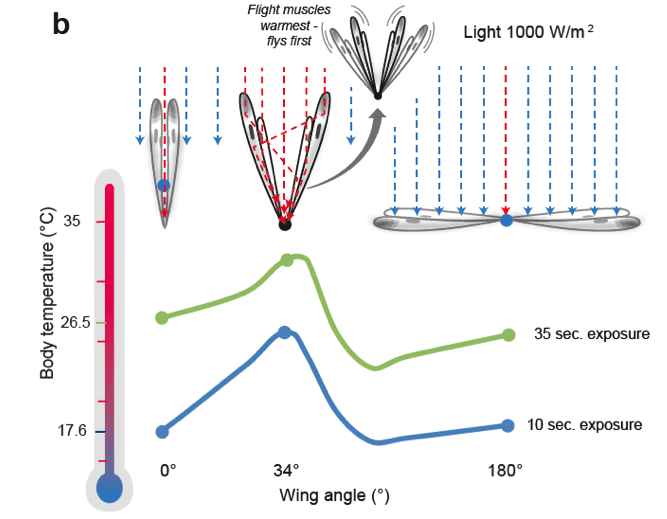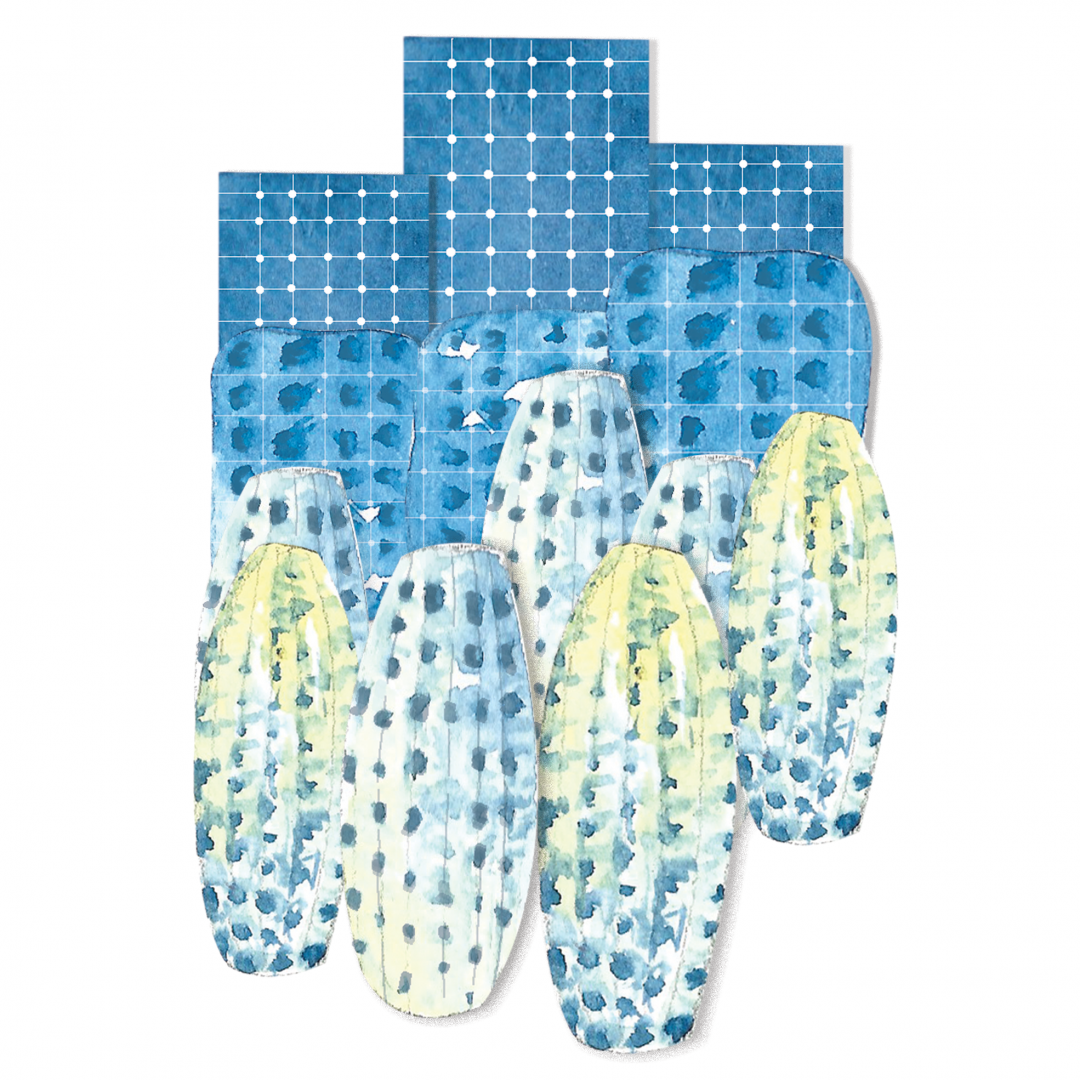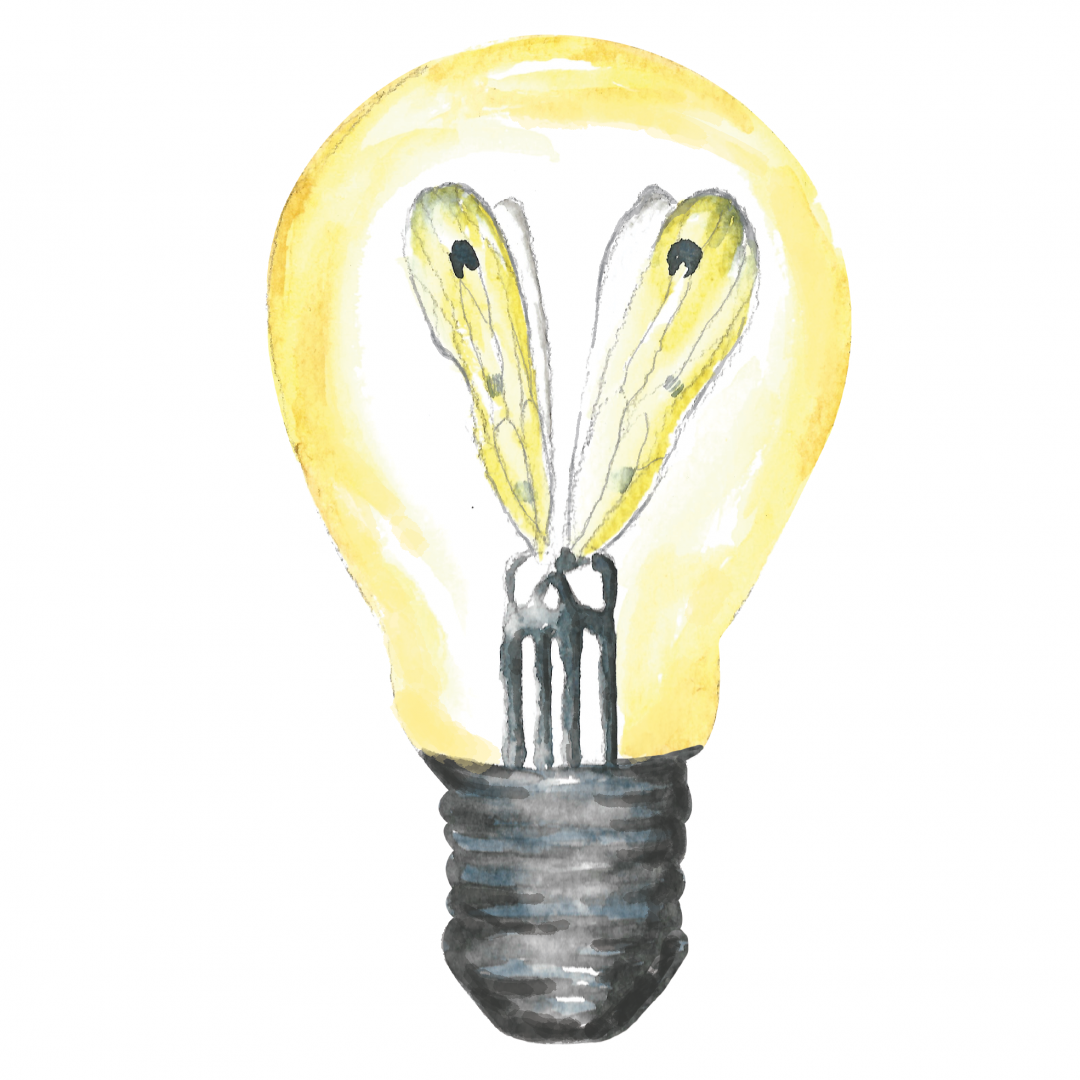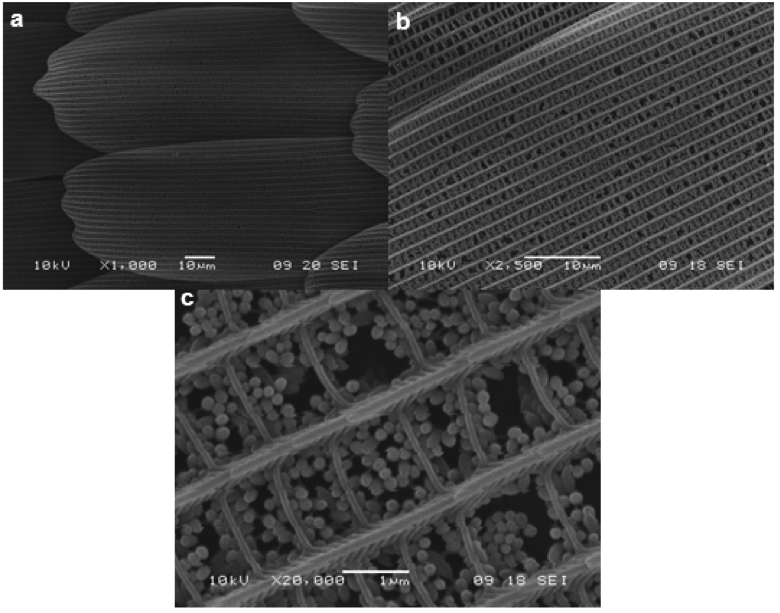“Biomimicry” is the word we use to describe when we steal or are inspired by nature’s incredible designs and apply them to our own creations. We’ve done it many times over—with Velcro, aeroplane and turbine fins, and the nose of the Shinkansen Bullet Train, for instance. When you see the original models out in the wild—sticky burrs, the flippers of marine animals, or the streamlined bill of a kingfisher, in the case of the examples above—it is clear that nature has much to teach us. However, we can’t learn from nature unless we conserve it. The good news is that biomimicry itself may facilitate more and better conservation.
You might think that butterflies are more likely to inspire artists than scientists, but these insects are the basis of cutting-edge biomimicry research into how to improve solar panels. Some species of butterfly—the small cabbage white (Pieris rapae), the green veined white (Pieris napi), and the large cabbage white (Pieris brassicae)—have figured out that they can heat their flight muscles faster in the morning sun if they position their very white wings in a particular V-shape above their bodies. By energising themselves in this more efficient way, these whites (referred to hereafter as ‘Pierids’) can go foraging for all the best fruit whilst the other butterflies are still enjoying their metaphorical solar coffee. After observing this behaviour, a group of interdisciplinary researchers (of which I am a member) asked whether a closer analysis of the butterfly’s technique might help them optimise solar panels—which are somewhat expensive and, relative to many sun-basking species out in nature, fairly inefficient (especially in places like the cloudy UK, where the butterfly research is being conducted).

The secret of the butterflies’ success is their “optical concentrator”. In the human world, examples of optical concentrators include magnifying glasses, telescopes, lighthouses, spectacles, and cameras; each of these devices manipulate light to increase or decrease the size of an image. Solar panels incorporate optical concentrators in the form of specialised “photovoltaic (PV) concentrators”, which combine optics with photovoltaic material that converts the sunlight into electricity. The optics are designed to focus the image of the sun onto the small areas of photovoltaic material in the same way analog cameras compress large scenes onto much smaller photo film. This allows solar panels to receive more energy and, therefore, produce more power—sometimes at even greater efficiencies due to how the materials they’re made of work.
In the world of thermodynamics, the more concentrated the energy is on a converting element (such as PV), the more efficient the conversion process becomes. This is one of the reasons scientists are so keen on developing solar concentrator technology. Single-junction solar cells—the first generation of solar panels—had efficiencies of only around 15%. Due to the constraints of thermodynamic laws, their theoretical limit was 33%, though this could be increased to 45% with concentration. For multi-junction solar cells, the increase facilitated by concentrators is, even more, improving the efficiency limit from 66% to 93%—as long as the cells are functioning in a difficult-to-create perfect system. Currently, the record solar cell efficiency in a real-world functioning system (a 4-junction solar cell under concentrated sunlight, to be specific) is 46%.

In other words, we still have a long way to go but the efficiencies and efficiency potentials of solar cells are still higher than those of wind or wave turbines (currently at around 35% with an efficiency limit of 59%). The efficiency of solar cells can go higher and they can be installed in almost any location—in almost any size and shape. However, to optimise the solar concentrating process, researchers and designers have to make adjustments and compromises on a wide array of solar panel traits— including size, weight, angles, materials, stability, and ease of manufacturing—to produce final products that function optimally across a range of temperatures and under different weather conditions. As if that wasn’t already enough to think about, priorities for each of these change depending on the exact application— so designers must start from scratch for each new project!
Current solar panels are bulky and heavy, limiting our ability to install them directly onto building structures and vehicles. Solar concentrators can be used to design differently shaped solar panels which integrate into buildings as tiles or windows, but these features can add weight and make the solar panels thicker and more cumbersome. What we need is lightweight, reliable, and weather-resistant optics—which is exactly what the wings of the cabbage white butterfly seem to be.
These species have been concentrating light for much longer than we have; if they had been watching when we first developed the telescope, they would have most likely laughed at how clever we thought we were. In order to concentrate light, the butterflies use their wings like a funnel to catch a wide area of sunlight and narrow its focus onto their much smaller thoraxes. If we were to adopt a similar method with our technology, we could reduce the area of photovoltaic material (PVM) required in solar panels—a huge step forward in our search for sustainable clean energy, as PVM is the expensive part of solar panels. Protective glass, wires, and metal framework merely play a supporting role while the PVM does the hard work of converting sunlight into electricity.

So why did we think these butterflies were concentrating light in the first place? Simple observation—the first, and often most overlooked, step in the scientific process. Biologists noticed that these species always basked with their wings in a very particular ‘V’ shape characterised by a consistent opening angle. This seemed too repeated a behaviour to merely result from chance—especially since it was not observed in other species. Enter the physicist studying solar energy technology. By chatting with colleagues in this other discipline, the biologists found out about V-trough concentrator photovoltaics, a type of technology in which the specific shape and the opening angle is used to optimally reflect light onto solar panels at the centre of the base. The scientists predicted that the butterflies’ wings probably had good reflectance (most of the light hitting the butterfly wing is reflected in some direction) allowing them to use the ‘V’ posture to increase the amount of energy being directed toward their bodies. The researchers teamed up to explore this multidisciplinary research question to find out how to steal clever ideas from nature to help us improve our designs…yet again.
Our team has measured the wings of all three species of Pierid mentioned above. We not only found the reflectance of these wings to be very high (more than 80% for the large cabbage white), but also to reflect the range of light useable by solar cells. It is remarkable—and highly promising for the field of solar energy—that a natural substance could achieve this while being very lightweight and weather resistant.

Further investigations involved attaching actual butterfly wings to a small (1 × 1 cm) photovoltaic cell and recording the power output at different wing opening angles. We found that the wings successfully increased the power output from the small solar cell at a power-to-weight ratio 17× higher than that of standard solar concentrator technology. This improvement resulted from the fact that butterfly wings weigh significantly less than the standard mirror or lens materials used in manmade solar panels. Attachment of the wings increased the amount of light hitting the solar cell (a result of the concentrator effect) and increased the power output—with minimum added weight. By mimicking the structure of butterfly wings when manufacturing solar panels in the future, we can reduce the amount of rare, toxic, and costly-to-mine PV material. This can reduce the overall weight of the solar panels, which has the added benefit of diminishing the cost and energy required to make and transport the devices.
What do these naturally reflective wings look like? There are large variations in structures and properties observed across butterfly species but the basic arrangement is a series of scales tiled over the wing and partially overlapping in a way similar to roof tiles. Each individual scale is made up of vertical lines of chitin (the material comprising insect exoskeletons), linked by shorter ribs. The cabbage white butterflies contain a unique added layer of ellipsoidal pterin beads; pterin is a molecule made up of two joined rings that give Pieridae wings their white colour and high natural reflectance. The pterin compounds are shaped into three-dimensional ovals that squeeze between the short and long ribs of the wing scales. Scientists are still trying to understand how the butterflies grow such small shapes (~500 nm–about 200 times thinner than an eyelash) that seem joined to the central band of the beads. It is unusual to find this elongated bead shape in nature because it is not something that is straightforward to produce. Further, the beads are joined so delicately that physical abrasion causes them to fall off like pollen grains shaken from an anther. Why have butterfly wings evolved to have such a complex structure which can be thrown away so easily? Is it so the beads can more easily be renewed and the bright, reflective wings can remain pristine? Is it for signalling as well as concentration purposes? Further research is required to fully understand, and therefore utilise in a solar energy capacity, the properties of the unique butterfly wing structure and its optical and physical characteristics.
Currently, we are trying to replicate the complex butterfly wing structure synthetically to produce a similar lightweight and reflective solar concentrator for solar panels. This multidisciplinary research project also aims to explore other ways in which biomimicry can improve technology. For example, we are examining other interesting butterfly wing properties such as water resistance, durability, and transparency (how much light hitting a material passes straight through without being reflected, absorbed, or scattered). These characteristics could help us address problems associated with the glass that is used in all solar technology, either as a concentrating lens (magnifier) or as a protective outer layer. If we could steal a few tricks from butterflies, we could potentially improve outputs from, and longevity of, the next-generation solar panels.
As exciting as the butterfly biomimicry research is, perhaps even more amazing is the fact that it is just the tip of the iceberg; nature contains a vast range of advanced and complex designs that could eventually be studied, replicated, and adapted for our own use. These structures emerged over billions of years as a result of evolution optimising their functioning. This design process far exceeds any ‘trial and error’ optimisation routine that could ever be carried out by us—not only in terms of timescale but also success and sheer creativity. Structures within nature often fulfil multiple functions, and so the resulting features are a compromise reflecting a series of trade-offs associated with the many jobs they must complete and the many physical constraints faced by their owners. In the case of cabbage white butterflies, for example, wings need to facilitate flight, capture heat, provide camouflage (white flowers) to avoid predators, be flashy to catch the eye of potential mates and be both strong and large enough to get the butterflies’ bodies airborne but just enough so as not to weigh the animal down.
These complicated structures may appear random and chaotic to the casual observer when, in fact, they represent a delicate balance of many influences—environmental, genetic, physical, energetic, social, and developmental—that we are yet to understand. Improving our knowledge of how these forces cumulatively drive the evolution of traits (and of the resulting physical characteristics themselves) could be fruitful, as these ‘chaotic’ designs have already proven to be useful in certain applications. For example, Blu-ray disks are patterned with partly-random holes to better manage the lasers hitting them whilst they are being read, and nuclear fusion is made more stable by including obscure twisting designs in the magnetic chambers where the superheated fuel is contained.
The big question is, is it actually possible to actively design this sort of randomness? Luckily, we don’t have to—thanks to biomimicry. By copying nature’s best inventions, we can reach a more sustainable way of living; by using biomimicry to promote conservation, we can help protect the very species from which we can draw further inspiration. As the story of the cabbage white shows, incredible technological breakthroughs can result from paying attention to the world around us, asking the right questions, forging collaborations across disciplinary boundaries, and designing smart experiments to find useful patterns in the chaos.
Further reading
Doeleman, H. 2012. Limiting and realistic efficiencies of multi-junction solar cells. M.Sc. thesis. FOM institute AMOLF, Amsterdam, The Netherlands.
Leertouwer, H.L. 2007. Colourful butterfly wings: scale stacks, iridescence and sexual dichromatism of Pieridae. Entomologische Berichten 67(5): 158–164.
Shanks, K. et al. 2015. White butterflies as solar photovoltaic concentrators. Scientific Reports 5: 12267.
Shanks, K. Senthilarasu, S. and T.K. Mallick. 2016. Optics for concentrating photovoltaics: Trends, limits and opportunities for materials and design. Renewable and Sustainable Energy Reviews. 60: 394–407.






